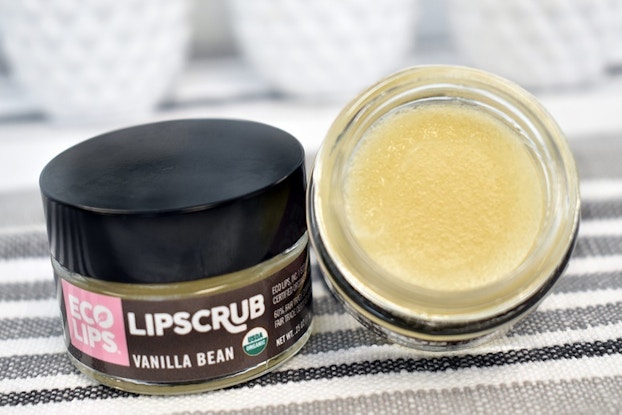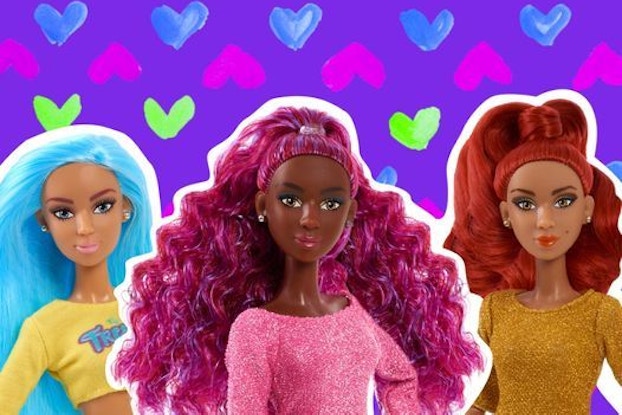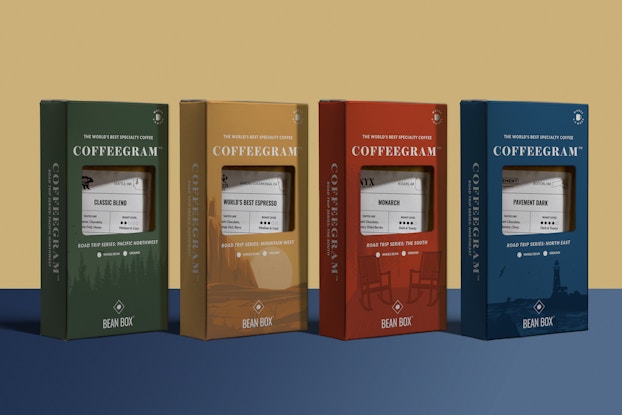
Three startups offer tips on breaking into Walmart:
- Startups would be wise to tap their founders to pitch Walmart directly, which will resonate more with a Walmart buyer than a company representative, said Steve Shriver, CEO of Eco Lips.
- Create a PowerPoint deck, or ideally a prototype, that demonstrates precisely what your product is and how it will uniquely serve Walmart’s customer base, said Dr. Lisa Williams, CEO and founder of The World of EPI, parent company of The Fresh Dolls.
- Using data from direct-to-consumer sales can build a persuasive argument for the likely success of a product on Walmart’s shelves, said Ryan Fritzky, cofounder of Bean Box.
For many small consumer product brands, getting distribution in Walmart is an important milestone. The retailer’s global presence represents the potential for millions of new customers and exponential sales growth.
The path to securing a presence on Walmart’s shelves can be challenging, however. It may require repeated efforts to secure a meeting with a buyer, and once that happens, companies need to give a strong, carefully planned argument for how the product will benefit Walmart and its customers.
CO— spoke with the leaders of three companies who shared their insider perspectives on breaking into the nation’s biggest retailer: lip balm brand Eco Lips, which had widespread distribution in natural independent and small chains before it launched in Walmart five years ago; The World of EPI, parent of The Fresh Dolls brand and other products, which got its start in Walmart from a single book; and Bean Box, which offers subscription coffee online and has just recently launched a four-SKU product line in Walmart.
‘After a solid year of trying to find the right people, we were finally introduced to a local Bentonville, Arkansas, rep group that was able to get us a meeting’ with Walmart
Steve Shriver, CEO, Eco Lips
We started asking our existing brokers who have helped us grow our brand if they had anyone who could introduce us to Walmart. After a solid year of trying to find the right people, we were finally introduced to a local Bentonville, Arkansas, rep group that was able to get us a meeting.
There was quite a bit of prep work involved. There were different categories in the store [that the lip balms] could go into — cough and cold, the front end, the natural products [section] — so there is some strategy involved in finding the right buyer to pitch to. That’s where the expertise of the rep helped us. We decided the best point of entry for use was in the natural products set, because we are a natural brand, and we resonate with that consumer.
We put together a good PowerPoint and put every bit of our marketing into it — all the important things — our sustainability efforts, made in the USA, and how we believe that we will speak to the Walmart consumer. It pitched, and we got placement. Getting to the point where we had that meeting was the hard part.
I would recommend that, rather than have somebody tell the [brand’s] story for them, the founder can tell it, and it means a lot more to the buyer.
The buyer asked us what our top two products were in the natural industry. The first is Mongo Kiss, and we had a value-oriented pitch — it’s a little bit larger in size, priced around $2, but it’s still organic, non-GMO, and fair trade, at a really good price. We went in there knowing that Walmart’s philosophy is bringing the most value to the customer.
Then we have a lip scrub. Lip balm is commoditized, but the lip scrub is an innovation, and we were first to market with that concept. It was really cool that the buyer took the risk on this innovation.
You have several months to get ready. You might have certain pack sizes you have to make for them. For example, we normally sell products in 12-packs, and they asked us for six-packs.
You definitely are going to have to make some accommodations for their warehousing. You get OTIF [on time, in full] scored every week, and if you score gets too low, it can result in fines.
We had a lot of internal meetings about inventory management. Walmart gives you a packet full of specifications for shipping, and you really need to understand the expectations of their warehouses — how to stack a pallet, for example.
One thing that’s really important to understand is that they are really in the real estate business — every square inch of that store has to be really well thought-out. You have to think about [your packaging and] the space you take up on the shelf.
My advice is don’t give up, and if you get a chance to attend some of their events, such as their open vendor events, or made in America events, try every single angle.
They are really great to work with, and I hope more people get the opportunity to experience it and benefit from it.
[Read: How a New Wave of DTC Startups Are Tapping Big Retail to Scale Growth]

Create a prototype to show Walmart your product and ‘how it will be a great service to their customer base’
Dr. Lisa Williams, CEO, The World of EPI, parent of Fresh Dolls
As a professor, I was asking business leaders what it means to have success, and one of the people I interviewed was Lee Scott, who at the time was the president of Walmart. He and I had something in common in that we both had degrees in supply chain management.
The book was entitled ‘Leading Beyond Excellence.’ I sent all the leaders a copy, and Lee read the book, liked it, and asked if he could have the book in Walmart to sell. That book did well, and then people started asking me about writing a line of children’s stories.
At first, I said no. I am a college professor; I don’t write children’s literature. But then I checked my heart and checked my soul, and I was very committed to literacy, so I decided to do it. I added a publishing company, with a collection of children’s books, which were also sold at Walmart. The children’s books did very well, and then the toy buyer came to me and said, ‘We love your characters. Will you do dolls in the image and likeness of the characters in your books?’
We had multicultural characters in the books, and they wanted us to do a line of dolls that represented the inclusivity and ethnicity of the books.
The first thing you have to do is come up with a unique offering. I would advise all aspiring Walmart suppliers to literally walk your Walmart store and see what’s missing.Dr. Lisa Williams, CEO, The World of EPI
It’s not an easy process. The first thing you have to do is come up with a unique offering. I would advise all aspiring Walmart suppliers to literally walk your Walmart store and see what’s missing. Then you go to the buyer — now they have a portal, where you can apply to meet with the buyer. Then you need to have at minimum a PowerPoint deck, or ideally a prototype, to show them what the product is and talk about how it will be a great service to their customer base.
You also have to be price competitive. You tell them you have this new shiny widget, that their customers are going to love it, and that you can do it at a really good price.
Once you have those things and you’ve met with a buyer, the buyer will come back with a purchase order. Ideally you will already have your factory identified, because then you can go right to the factory, and say, ‘Let’s get humming, and let’s get these widgets made.’
You work closely with the factory, making sure you meet all the safety standards, and you have all the certifications, which can be very expensive. Insurance can be tens of thousands of dollars. You need to make sure that when you set your price, you still have enough margin to be profitable after all these costs.
We are always listening to our customers, and I encourage all companies to do that. How do you make the product appealing at a reasonable price? That’s where creativity comes in.
You have to figure out how to cut even a penny, because a penny when you are doing 100,000 or 500,000 units is a sizeable amount of savings.
[Read: How 3 Startups Landed on the Shelves of Target, Whole Foods and Nordstrom]

As a DTC brand, you can leverage the data you have about customers’ purchase patterns to give yourself the best chance of success’
Ryan Fritzky, Co-Founder, Bean Box
Last October we launched a “Twelve Mornings of Coffee” gift product for the holidays, and we got a tremendous amount of PR from that product. It was on the Today Show, and we had something like 230 media placements. With that press, a Walmart buyer who oversees coffee nationally reached out to us.
People have shifted their coffee preferences toward more specialty coffee, and we had been seeing that in our business, and Walmart had been seeing it in their stores. We came up with an experience where customers can try, in a 2-ounce format, coffee from local roasters and coffees from all over the world. They can try specialty coffee in that way, instead of buying a pound of coffee and not knowing if they will like it.
We developed two product lines: World Tasting series and U.S. Road Trip series, which allow customers to try coffees regionally. That’s what we are rolling out this summer with Walmart.
We just came up with the right product mix and worked with the team there.
As a direct-to-consumer brand, we had a lot of data about what works, and about price points, and we are used to handling peak volumes in [the fourth quarter], so we were able to scale up quickly.
We had some conversations internally [before the Walmart introduction] about what a retail product would look like. We have always known it would require a different packaging investment. Our Twelve Months of Coffee product was an example of us applying a lot of creativity to our packaging, [which] was successful online.
We knew we could take that product innovation, along with our 2-ounce tasting format, which is unique in specialty coffee, and pair those things together to create something that would provide a lot of value for customers in physical stores.
As a DTC brand, you can leverage the data you have about customers’ purchase patterns to give yourself the best chance of success. Walmart looked to us as someone who really understands coffee consumption patterns and coffee buying patterns, and they were really looking for someone who could provide those insights into a product like this.
My advice is to focus on the product first. Getting samples in people’s hands and getting their reaction is step one. Focus on getting the product right, and then being a partner in terms of your data.
Bean Box has always been in a position to introduce people to great specialty coffee. There’s a great matchup with customers who are looking to buy specialty coffee in a retail environment, where it costs 55 or 60 cents a cup for our tasting format, compared to buying coffee at a café for $5 a cup.
Walmart said they have customers who want better coffee. In a city like Portland or Seattle, you can get access to a lot of small-batch roasters and buy a bag of beans or a bag of grounds, but you can’t do that everywhere across the country. We look at this as providing more access to more people. That’s kind of our whole vision and mission.
CO— aims to bring you inspiration from leading respected experts. However, before making any business decision, you should consult a professional who can advise you based on your individual situation.
Follow us on Instagram for more expert tips & business owners’ stories.
CO—is committed to helping you start, run and grow your small business. Learn more about the benefits of small business membership in the U.S. Chamber of Commerce, here.









